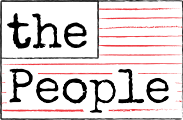Civics U: Poverty
The Dream
There are two main reasons why people from other countries have come to America: the opportunity to be free, and the opportunity to prosper (become prosperous). While these are distinct from one another, they are also interrelated, even as captured in the famous line “Give me your tired, your poor, your huddled masses yearning to breathe free” in Emma Lazarus’ poem, New Colossus.
The two motives and goals can be distinct but intertwined in the motivation and goals of new immigrants. They are also intertwined in American history and the American political and economic system. The freedom to work, to create and invent, to benefit and profit from one’s labor (and yes, sometimes, rightly or wrongly, from another’s labor) motivated much of the development of America.
The Reality
Of course poverty is found in countries around the world. The number one goal of the United Nations’ Sustainable Development Goals is to “end poverty in all forms everywhere.”
The most extreme and prevalent poverty is most visible in other parts of the world. Nevertheless poverty is also significant in its scope and impact in the United States. Consider these statistics from 2019 for the U.S. and for cities with high poverty rates:
United States. below poverty level, all people 12.3%
Lancaster, California. 22% in poverty
Pasadena, CA. 17% in poverty
Danville, VA. 22% in poverty
Shreveport, LA. 26% in poverty
Harlingen, TX. 29% in poverty
Reading, PA. 33% in poverty
Flint, MI. 39% in poverty
Detroit, MI. 35% in poverty
The “poverty line” is meant to refer to the minimum income that a family needs to meet their basic necessities. It is used therefore to determine eligibility for certain federal benefits and programs.
Except for those who are homeless, poverty in the U.S. does not usually mean no income, or starvation – but it does involve real difficulties. According to the National Low Income Housing Coalition’s Out of Reach 2021 report “in no state, metropolitan area, or county can a full-time minimum-wage worker afford a modest two-bedroom rental home, and these workers cannot afford modest one-bedroom apartments in 93% of U.S. counties.” Thus, we have the debates about mandating minimum wages and at what level.
Causes
Many studies have been done and many books written about the cause of poverty and about models and policies to eliminate or at least reduce poverty in the United States and in the world. What are the causes of poverty? One can think first of the individual, and then think about how systemic factors impact individuals.
No doubt some individuals have caused their own poverty through simple laziness or by being undependable in their work. This is not new in human history. Already, in the Old Testament of the Bible, a proverb advised “Love not sleep, lest you come to poverty…” (Proverbs 20:13), and in the New Testament the church was given the rule that “If a man will not work, he shall not eat.” These teachings underpinned values in the early colonies. And not the colonies only; many cultures have proverbs and teachings instructing persons to be industrious and not lazy. In addition, dysfunctional behaviors, ranging from poor management of family finances to drug usage keep some persons from prosperity or obtaining or keeping employment.
But social and other factors outside of the individual’s control can affect and prevent a person’s or a group of persons’ ability to work –to gain employment and advancement. These factors include such things as exploitation, oppression, and discrimination in hiring; lack of or ineffective education, slumps in the community economy, and even family demands and circumstances. Sometimes there is simply a shut-down of a local industry that puts people out of work.
Solutions
The first solution to poverty has probably always been direct charity. Again, the Bible is replete with statements and illustrations about how a neighbor, a relative, and the church should care for, and take care of, the poor. The United States historically has been a charitable nation, with people responding in times of need to give even to people in other countries; and charitable organizations are numerous.
Today we see more emphasis on and attention to programs, especially by governments, to assist the poor or ameliorate conditions that cause or perpetuate poverty. Thus, we have direct financial approaches through “welfare programs”, child tax credits, SNAP (Supplemental Nutrition Assistance Program), subsidized low-rent housing, guaranteed minimum wage and minimum income, and so on.
And we have less direct approaches including vocational training, redesigning education, laws against discrimination in employment and housing, federal subsidized or guaranteed housing loan programs, and business microfinancing.
Meanwhile there are approaches that consider the social and systemic dimensions of poverty. The Multidimensional Aspects of Poverty (MAP) Research conducted from 2016 to 2019 led to an approach and training that looks at key aspects of poverty including stigma and shame, lack of health and well-being, social isolation, and more. It deals with how labeling “the poor” can marginalize them, and how to involve people in poverty in policy reviews and practice to see the dimensions of poverty from their experience.
I do not believe that poverty can be totally eliminated. But to simply ignore and overlook poverty is to ignore people – many people, some whom we may know and others whom we do not know or see – who need help in some form to reach for and realize some part of the American dream, or to simply enjoy some basic health and prosperity.

